
Thanksgiving Point lesson plan about animal environments
- Subject:
- Science
- Material Type:
- Lesson Plan
- Provider:
- Thanksgiving Point
- Date Added:
- 02/24/2023

Thanksgiving Point lesson plan about animal environments

This is a third-grade student science experience tied to SEEd standard 3.2.5. In this experience students create an argument for why certain plants and animals live in certain habitats.
These experiences were designed to support students in engaging in science investigations with siblings and/or parents at home and then report back about what was discovered. They were created in a way that is easily adaptable for both online and printed formats. They are formatted to help students wonder about and investigate the science phenomena happening in the world around them. These experiences do not describe how students should write up and return work to their teacher. It is up to each teacher to adapt them to best meet student needs. When individualized by the teacher, a student could be asked to engage in one or more of these experiences a week and report back. This format aligns closely to the vision and expectation of the SEEd standards.

This lesson is an art integration lesson based on the following standards: Standard 3.2.5Engage in argument from evidence that in a particular habitat (system) some organisms can survive well, some survive less well, and some cannot survive at all. Emphasize that organisms and habitats form systems in which the parts depend upon each other. Examples of evidence could include needs and characteristics of the organisms and habitats involved such as cacti growing in dry, sandy soil but not surviving in wet, saturated soil. (LS4.C) Standard 3.V.CR.1:Elaborate on an imaginative idea and apply knowledge of available resources, tools, and technologies to investigate personal ideas through the art-making process.
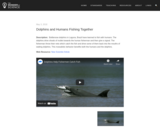
This is a phenomenon video for 3.2.5. Science Phenomena: 3rd grade - Ecosystem Change
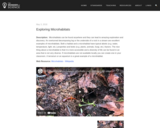
This is a phenomenon video for 3.2.5. Science Phenomena: 3rd grade - Ecosystem Change
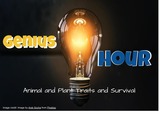
This is the first lesson in a set of lessons to teach about animal and plant adaptations and their relation to survival in a Genius Hour Format. Genius Hour is just a process where students choose an interesting topic, generate a deep question and research to find the answer to that question. The students then create a product that showcases that learning. Background knowledge for this lesson uses resources from the State Board of Education and Generation Genius but they are not essential to the lesson. image from pixabay, no attribution required

This lesson plan teaches students about the habitats found around the world and encourages digital fluency by requiring them to explore digital resourses and create an Adobe Photo Page. First, students will question, discuss, view, explore, read, and research to build their knowledge. Then they will demonstrate this knowlege by choosing a habitiat, selecting appropriate photos, adding descriptive informational text, and providing correct citations to their projects. They will then publish and share their projects with their peers. Intro Image Citation:Nambia Desert Sand, By FuN_Lucky, PixaBay License https://pixabay.com/photos/namibia-desert-sand-dune-dust-2049203/
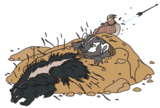
According to Paiute legend, the hawk and the coyote were not always animals as we see them now. Long ago, they were people, like you and me. The hawk was known as Kuhsawv, and the coyote was known as Soonungwuv. Coyote tales are part of the Paiute oral tradition used to teach proper behavio, natural phenomenon and values from an early age. These stories are only told during the winter time. The Coyote illustrates the mischievous nature in all of us. Students will listen to a Paiute tale and learn about folktales. They will also be introduced to the Paiute Indian Tribe of Utah, the location and how tribal members are working to preserve their language and culture. Students will also learn about how external structures and adaptations of animals help them to survive in their environment through a group activity.

This worksheet quizzes students on their understanding of birds and their habitats. This worksheet goes along with the "Bird Breakfast Cafe Lesson Plan" from the Ogden Nature Center.

Student facing NearPod lessons for the SEEdStoryLines. A free K-6 science curriculum written by teachers and based on both the 5E and GRC models. It is a student-centered curriculum that uses a storyline format to promote wonder, sensemaking, and problem solving. It includes both face-to-face and remote materials. This should be used with the other episodes to cover the standard.

Student facing NearPod lessons for the SEEdStoryLines. A free K-6 science curriculum written by teachers and based on both the 5E and GRC models. It is a student-centered curriculum that uses a storyline format to promote wonder, sensemaking, and problem solving. It includes both face-to-face and remote materials. This should be used with the other episodes to cover the standard.

Student facing NearPod lessons for the SEEdStoryLines. A free K-6 science curriculum written by teachers and based on both the 5E and GRC models. It is a student-centered curriculum that uses a storyline format to promote wonder, sensemaking, and problem solving. It includes both face-to-face and remote materials. This should be used with the other episodes to cover the standard.

Student facing NearPod lessons for the SEEdStoryLines. A free K-6 science curriculum written by teachers and based on both the 5E and GRC models. It is a student-centered curriculum that uses a storyline format to promote wonder, sensemaking, and problem solving. It includes both face-to-face and remote materials. This should be used with the other episodes to cover the standard completely.

Student facing NearPod lessons for the SEEdStoryLines. A free K-6 science curriculum written by teachers and based on both the 5E and GRC models. It is a student-centered curriculum that uses a storyline format to promote wonder, sensemaking, and problem solving. It includes both face-to-face and remote materials. This should be used with the other episodes to cover the stanard completely.

This is an interactive, third-grade Nearpod lesson tied to SEEd standard 3.2.5. It guides students through information and activities about how in a particular habitat some organisms can survive well.
This resource is a student-ready, three-dimensional SEEd science lesson you can add to your Nearpod library. Many of the phenomena, text, and images come from UEN OER textbooks, Seedstorylines.org, ck12.org, and pixabay.com. Most videos are from youtube.com or pbslearningmedia.org. Many of the simulations were found at phet.colorado.edu, ck12.org, and pbslearningmedia.org. This lesson is unique to Nebo School District but was built with the help of many amazing ideas from teachers throughout Utah.
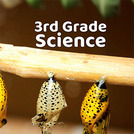
3rd Grade SEEd textbook for the 2022-2023 school year. This textbook was developed to align to the Utah Science with Engineering Education (SEEd) Standards. (Added: June 8, 2022)